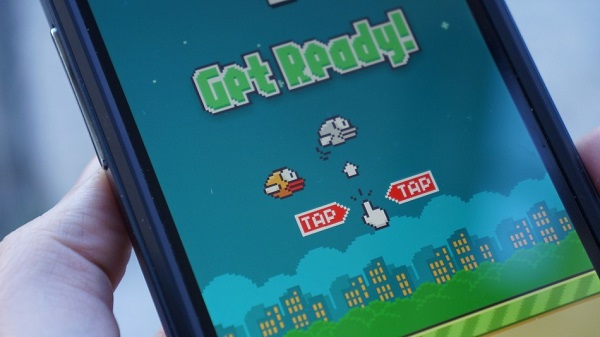Addicted to the screen
A few certain qualities blended perfectly together can create an irresistible app.

What do mobile games such as Flappy Bird, Candy Crush, and Pokemon Go have in common? They’re all impossible to put down; they’re borderline addictive.
What makes them so addictive, though? What is the constant at play that keeps people glued to their phone screens?
The number one factor that makes an addictive game is convenience. Consumers want to get as much out of an experience as they can in the shortest amount of time, making simpler, easier-to-learn apps take the places at the top of the charts.
As stated, games with simple designs are automatically eye-catching. Games such as Flappy Bird and Ballz have a clean, organized design and soft colors that make it nice to look at and absolutely stress-free, like most enjoyable games should be.
Not only are the neat aesthetichs of these games appreciated, but also the neat layout of buttons and controls that is immediately easy to understand and doesn’t require any time, which people are rarely willing to give, to interpret. The Next Web explains it as ‘being simple enough for even a nine-year-old to understand’. If people have to ‘work’ for something that should be quick and easy, like a cellphone app, they will quickly lose interest.
This also ties into the fact that the apps have to work. There’s dozens upon dozens of duplicates for lots of applications out there, so it only takes a heartbeat for one faulty program to be replaced with another. This stress is placed upon the developers, who, depending on how much the budget for the app itself is, have to make it as smooth-working as possible.
Not only does the experience need to be convenient for the users, but it should also be a casual, laid-back, and overall enjoyable time. A person likes to be able to play a phone game in one hand and also be able to do another thing with the other, or even being able to put the game down for any amount of time without having to worry about time restraints. This encourages use of the app or game in common human off-times, such as waiting in line or walking home from school, and has the user playing more than they realize. Also, if the game is of a more laid-back style, your subconscious will know that you won’t need to allot too much emotional energy and you’ll feel more inclined to play.
Playing a game should, of course, being enjoyable; what makes successful games just that is the small rewards you get. The excitement from seeing things like ‘high score’ or ‘new achievements’ on your screen releases dopamine in your brain, the chemical that makes you happy, and you automatically begin to associate that feeling with playing that game.
For games like Pokemon Go and Animal Crossing: Pocket Camp, being able to share and compare your in-game achievements and levels with friends also adds another level of excitement to the experience, especially for the competitive types.
So, the ease of use alongside simplicity, well-timed rewards, and relaxedness theoretically makes a great game; although, some instances really hit on something special.
Source: https://thenextweb.com/dd/2014/10/28/10-ingredients-concoct-subconsciously-addictive-mobile-app/

My name is Emily and I am so excited to be a member of the editorial board again for my senior year at Oakton. My favorite articles to write typically...




